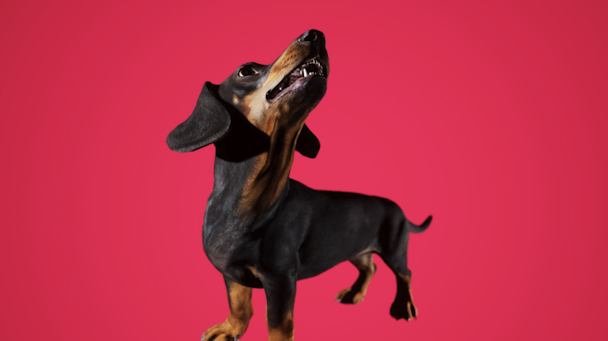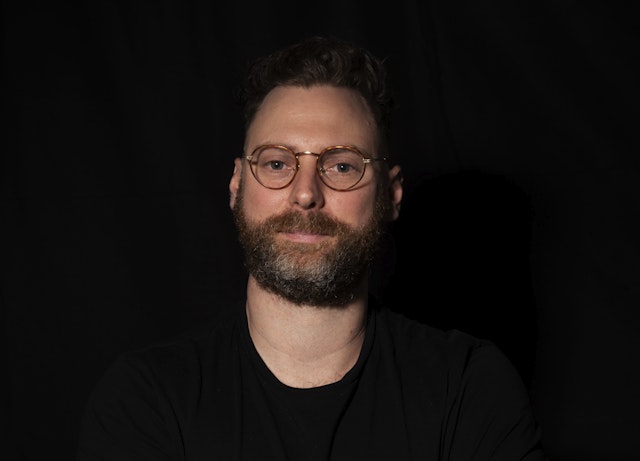How to update a brand mascot without upsetting your audience
The right mascot can embody the spirit of a brand, but even the most iconic must keep pace with the times.

Vitality’s mascot, dachsund Stanley, was recently refreshed by VCCP / VCCP
To remain valuable as brand assets, mascots need to evolve. Sometimes, it’s a visual uplift, sometimes a full makeover. Sometimes, it means replacing an animal actor with a digital version.
So, how should marketers and agencies go about deciding that a mascot or ’brand character’ needs to adapt a little? How do you know how much or how little to change? And, if a client hasn’t yet considered updating their character, how do you break that to them? Here’s what the experts say...
Advertisement
Show some restraint
Laurence Thomson, joint chief creative officer, McCann London: “In part, modern mascots are co-authored by the audience and brand. Go too far too soon with a beloved character and you risk alienation, a marketing purgatory of sorts with Gino on permanent life support. To avoid the Lurpak trombone man (Douglas, I know, I know) haunting at every Millward Brown seance, you must bring consumers on a journey of incremental evolution. I’d say about 7-15% change’ll do. Grow with them or risk becoming outmoded.”
Gregg Lipman, partner, CBX: “Here’s something brands should always think about when leveraging mascots: restraint. The strongest work is tethered through people, culture, and brand, and there’s an inherent elasticity between the three, which is to say, if you go too far, something breaks. As the M&M characters evolved, people got an even stronger sense of their varied personalities. But in recent campaign work, the brand over-indexed on the cultural aspect. By attempting to capture the zeitgeist of the time, it disregarded the timeless equity that had been developed over decades. And, as is always the case, people let it know it had missed the mark.”

Ho-yen Leung, strategy director, Elmwood: “Mascots embody the emotion of a brand. Even without directly aligning the value proposition, it’s that pure emotional trigger to stand out in the market. (Geckos and Ducks do sell insurance, you know.) It’s inherently irrational, but the distinctiveness keeps a brand top of mind. Modernization risks diluting this emotional bond, turning familiar affection into uncanny alienation.”
Matt Sia, creative director, Pearlfisher NY: ”We should consider heritage, brand values and awareness of the space a mascot lives in, as well as where opportunities exist to stand out for the right reasons. Change should be proactive, not reactive, and the result should be both timeless and timely. This all allows a brand to shine for its distinctive identity, resonate with audiences, and generate lasting impact and success.”
Advertisement
Change continuously so each shift is less risky
Dustin Artz, co-founder, Familiar Creatures: “From working on the Geico Gecko and Flo, we’ve learned endearing mascots to people is all about depth. You need to get past the smiling and mugging to make them more of a ‘person.’ Create the quirks, mannerisms, and pauses in language; don’t just shout reasons to believe at the audience. When it’s time for them to evolve, the best way forward is to go deeper, not different. When we created Duke’s Mayo’s mascot Tubby, we made sure to create a fully rounded character. And if we need to evolve him, we’ll build on his backstory, not change his fundamental DNA.”
Matt Charlton, chief executive officer, Brother & Sisters: “Evian Babies was, for me, the epitome of a brilliantly evolved brand mascot. Synchronized swimming, roller-blading, dancing, turning yourself into a baby – all wrapped around Evian Live Young. Gorgeous, clever and creative. The concept changed just as soon as it started to blunt, which is ultimately the secret – never let it become boring or invisible.”

Dean Paradise, executive creative director, Gut Miami: “Mascots hold a special place in my heart as some of my favorite ad icons: from E-Trade baby to Pillsbury Doughboy to Tony the Tiger. But often, it feels like brands use mascots just for the sake of having one. So, the question becomes less about mascots and more about distinctive assets. And with any iconic asset, you ask, does it still feel authentic for the brand and is it still relevant to the intended audience? Following that, it’s about ensuring the mascot feels creatively fresh in today’s world or at least placing it in an interesting creative context.”
Josh Tierney, senior vice-president of strategy, BMF: “Sometimes, alterations to iconic figures seem superfluous. Did the Quaker Oats man really require weight loss and a (non-Quaker) name? If briefed to update him, I’d question the client’s objectives and may propose alternative solutions. Sudden once-a-generation ‘refreshes’ can feel forced, concocted by marketers chasing cultural trends and relevance. That’s why I’d recommend a phased approach to updates, with a larger narrative guiding it.”
Suggested newsletters for you
Embrace potential
Camilla Yates, strategy director, Elvis: “Brand mascots are ‘fluent devices’ that drive system one thinking. To maximize their long-term effectiveness, you need to define the values and traits that will remain consistent while making strategic decisions about what needs to stay fresh based on consumer and cultural attitudes and behaviors. This often means evolving their look and pairing them with fresh stimuli to retain their relevance. Captain Birds Eye’s core role has remained consistent over time, while he has gone from comedic grandfather to suave seafarer to reflect the elevation of the brand and the frozen category as a whole.”
Josh Green, executive creative director, House 337: “We’re in the midst of a mascot renaissance in sports, with clubs putting anthropomorphic icons like Arsenal’s Gunnersaurus and Chelsea’s Stamford the Lion at the heart of family-friendly club marketing. For brands beyond sport, mascots embody personality, they travel globally and can charm younger audiences. If used with consistency, mascots can evolve into valuable brand assets. Imagine Pringles’ mustache on a rotating cast of characters – now that sounds like it would have bags of potential. But a word to the wise: cautionary tales are aplenty. Search for Kingsley the Mascot and proceed at your own risk.”
Colin Selinkow, executive creative director, DDB Chicago: “The trick is keeping what makes them familiar but updating just enough to keep them relevant. It’s less about what they look like, or how they’re generated, and more about is the message they embody still hitting in the right way for the right people.”
Kelly McCullough, creative director, Duncan Channon: “The catalyst for approaching a brand about changing a mascot is often related to research and identifying shifts in culture. Sometimes, it’s inspired by a new strategy or creative idea. All recommendations would be rooted in the research, strategy or creative. We’d demonstrate how the updates would elevate and/or expand the role of the mascot and how it will affect the brand across products and channels.”
Joe Baratelli, executive vice-president and chief creative officer, RPA: “I see campaigns as long stories to be told. So, it is important to build out the backgrounds for how characters act and behave. Business strategy usually dictates what we need to say at any given time and successful characters can flex and change based on the messaging and culture, such as social-value shifts and generational attitudes, while keeping the familiarity the audience knows and loves. Consistency is what gives mascots their superpower, immediate brand recognition and memorability, which grows into brand equity and, ultimately, loyalty.”
Hugo Bone, executive creative director, AML Group: “Mascots don’t need to evolve to remain valuable. If something’s working, why risk changing it? Take Aleksandr and Sergei. Same as day one and as valuable (and noticeable/popular/memorable/correctly attributable) as ever. Sure, they need to keep pace with the times, culture and audience, but they’re still the same loveable meerkats. It’s only if a mascot starts losing traction (through loss of popularity/reputation/life) that they need to change. And if that’s happening, your clever client already knows it. Easy conversation. But don’t change much or it’s not the same mascot any more – and your customers aren’t your customers any more.”
Want to join future debates? Get in touch: sam.bradley@thedrum.com.

